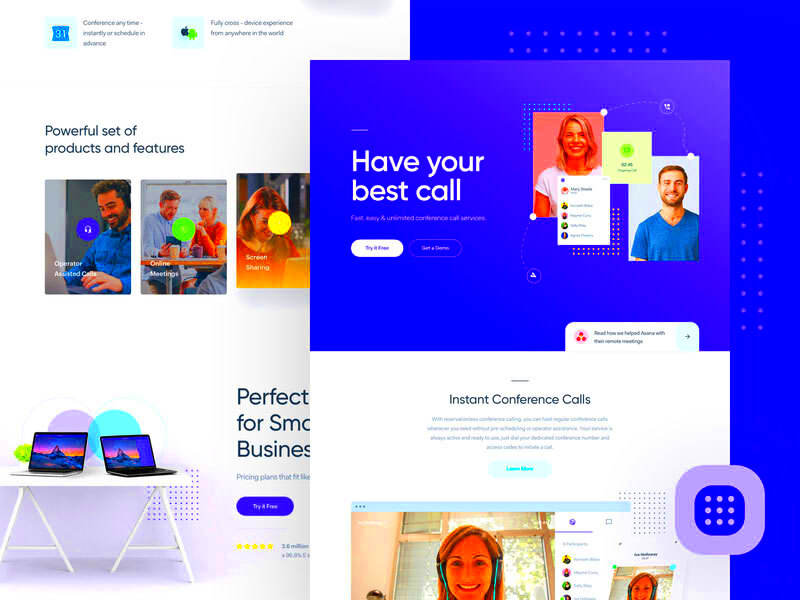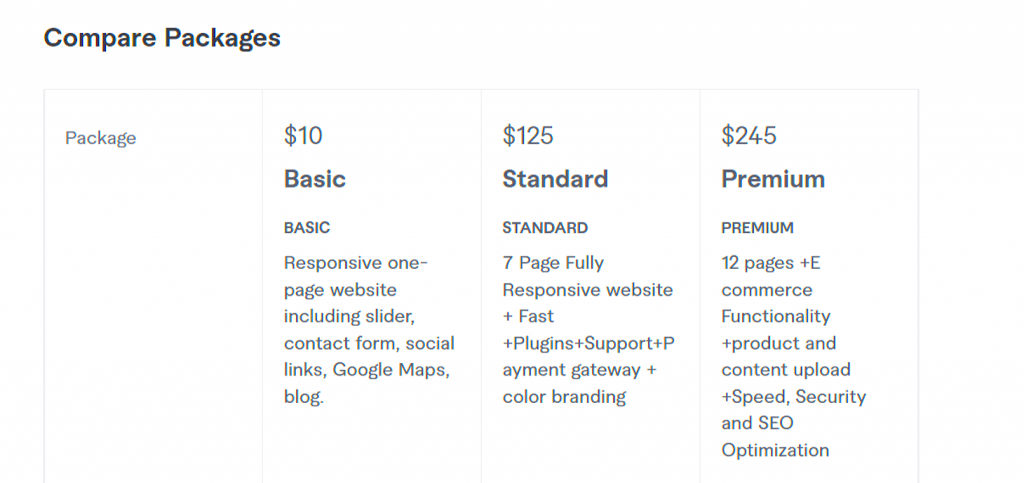Freelance website projects can be a rewarding venture for skilled web developers and designers. In today’s digital age, businesses and individuals need a strong online presence, making freelance work in this field highly sought after. If you're thinking about starting your freelance journey or are already working in the field, understanding how to price your services is crucial. This post will explore the various aspects that influence charges for freelance website projects, helping you to set competitive yet fair rates.
Understanding the Factors that Affect Charges

Several factors come into play when determining the charges for freelance website projects. Understanding these elements can help you set the right price for your services. Here are some key factors:
- Project Complexity: More complex projects with custom features require more time and expertise, leading to higher charges.
- Client Requirements: Specific client needs, such as unique design preferences or advanced functionalities, can affect the overall cost.
- Experience Level: Your level of experience can influence your rates. More experienced freelancers can charge higher fees.
- Market Demand: The demand for web development services in your area or niche can impact pricing.
- Time Frame: Urgent projects may come with a premium charge due to the need for faster turnaround.
Also Read This: How to Move a Video from Fiverr to Dropbox
Setting Your Hourly Rate as a Freelancer

Setting your hourly rate is a crucial step in your freelance career. Here are some guidelines to help you determine a fair rate:
- Calculate Your Expenses: List all your business expenses, including software, hosting, and marketing costs.
- Consider Your Skills: Assess your skills and experience to position yourself competitively. A highly skilled freelancer can command higher rates.
- Research Market Rates: Look at what others in your niche charge. This can give you a baseline for your pricing.
- Factor in Your Availability: Consider how many hours you can realistically work each week to ensure your income meets your needs.
- Be Flexible: Be prepared to adjust your rates based on client budgets or specific project requirements.
By following these steps, you can set a fair hourly rate that reflects your value and ensures your success as a freelancer.
Also Read This: How to Change Your Fiverr Review: A Step-by-Step Guide
Project-Based Pricing for Website Projects

Project-based pricing is a popular approach for freelancers working on website projects. Instead of charging by the hour, you quote a flat fee for the entire project. This method can be appealing for both you and your clients. Clients appreciate knowing the total cost upfront, and you have the potential to earn more if you complete the project efficiently.
When setting a project-based price, consider the following:
- Scope of Work: Clearly define what the project entails. Create a detailed list of deliverables to avoid misunderstandings later on.
- Time Estimate: Estimate how long the project will take. Be realistic to ensure you can meet the deadline without overworking yourself.
- Client Budget: Understand your client's budget. Tailor your proposal to fit their financial limits while still reflecting your value.
- Future Maintenance: Consider whether you’ll provide ongoing support or maintenance after the project is completed. If so, include this in your pricing.
By using project-based pricing, you can create a win-win situation where both you and your client are satisfied with the arrangement.
Also Read This: What Happens to Your Orders When Fiverr Cancels Your Gig?
Additional Costs to Consider in Freelance Work

When freelancing, it’s essential to consider additional costs beyond your standard rates. These costs can eat into your profits if not properly accounted for. Here are some common expenses you should keep in mind:
- Software and Tools: Invest in quality software for design, development, and project management. This might include subscriptions to tools like Adobe Creative Cloud or project management software.
- Marketing Expenses: Promote your services through online ads, social media, or a personal website. Budget for these costs to attract more clients.
- Taxes: Set aside a portion of your income for taxes. As a freelancer, you’re responsible for paying your own taxes, which can be a significant expense.
- Professional Development: Stay current in your field by taking courses or attending workshops. This investment in your skills can lead to higher-paying projects.
- Office Supplies: Don’t forget everyday supplies like a good computer, desk, and other office essentials.
By accounting for these additional costs, you can ensure your freelance business remains profitable and sustainable.
Also Read This: How to Use Diabolic Traffic Bot for Fiverr Gig Ranking
Negotiating Rates with Clients
Negotiating rates is a vital skill for freelancers. It can feel daunting, but with the right approach, you can reach an agreement that works for both you and your clients. Here are some tips for effective negotiation:
- Know Your Worth: Understand your skills and experience. Be confident in the value you provide to your clients.
- Listen to the Client: Take time to listen to the client’s needs and budget. This can help you tailor your proposal effectively.
- Be Clear and Direct: Communicate your pricing structure clearly. Avoid jargon and be straightforward about your rates.
- Offer Options: If a client has budget constraints, offer different packages or services at various price points to give them flexibility.
- Stay Professional: Maintain a positive and professional demeanor throughout the negotiation process. This builds trust and rapport with the client.
By mastering the art of negotiation, you can secure fair rates that reflect your expertise while maintaining positive relationships with your clients.
Also Read This: How to Become Fiverr Pro Verified
Building a Portfolio to Justify Your Charges
Creating a strong portfolio is essential for freelancers, especially in the web development and design fields. A well-curated portfolio showcases your skills, experience, and the quality of your work, helping potential clients understand why you charge what you do. Here are some tips for building an effective portfolio:
- Select Your Best Work: Include projects that highlight your strengths and range of skills. Quality is more important than quantity.
- Diverse Projects: Show a variety of styles and types of work. This demonstrates your versatility and ability to meet different client needs.
- Use Case Studies: Go beyond just displaying images. Include case studies that explain the project, your role, and the results achieved. This adds depth to your portfolio.
- Client Testimonials: If possible, include positive feedback from past clients. Testimonials can significantly enhance your credibility.
- Update Regularly: Keep your portfolio fresh by adding new work and removing older projects that no longer represent your skills.
A well-presented portfolio can not only justify your rates but also attract clients who are willing to pay for quality work.
Also Read This: How to Boost Popularity on Fiverr
FAQ About Freelance Website Project Charges
Here are some frequently asked questions about charging for freelance website projects. These questions can help clarify common concerns for both freelancers and clients:
- How do I determine my project rate? Consider your skills, the complexity of the project, and market rates to set a competitive price.
- Should I charge hourly or per project? It depends on the project scope. For larger projects, a flat rate may be more appealing to clients.
- What if a project takes longer than expected? Communicate with your client about any potential delays and discuss additional charges if necessary.
- Can I negotiate my rates? Yes! Negotiating is common. Be open to discussing your rates while being firm about your value.
- How do I handle clients who want a discount? If a client requests a discount, assess if it’s worth it. You can offer different pricing options instead of lowering your rates.
Answering these questions can help set clear expectations and foster a positive working relationship with clients.
Conclusion and Final Thoughts
Charging for freelance website projects involves understanding your worth, setting appropriate rates, and effectively communicating with clients. By considering various factors such as project complexity, your experience, and additional costs, you can arrive at a pricing strategy that works for you.
Remember that building a strong portfolio is key to justifying your charges. Showcasing your best work and client testimonials can help you stand out in a competitive market. Don't shy away from negotiating your rates; it’s a normal part of the freelance business.
Ultimately, the goal is to create a sustainable freelance career where you feel valued for the work you do. With the right approach, you can achieve success and satisfaction in your fr




